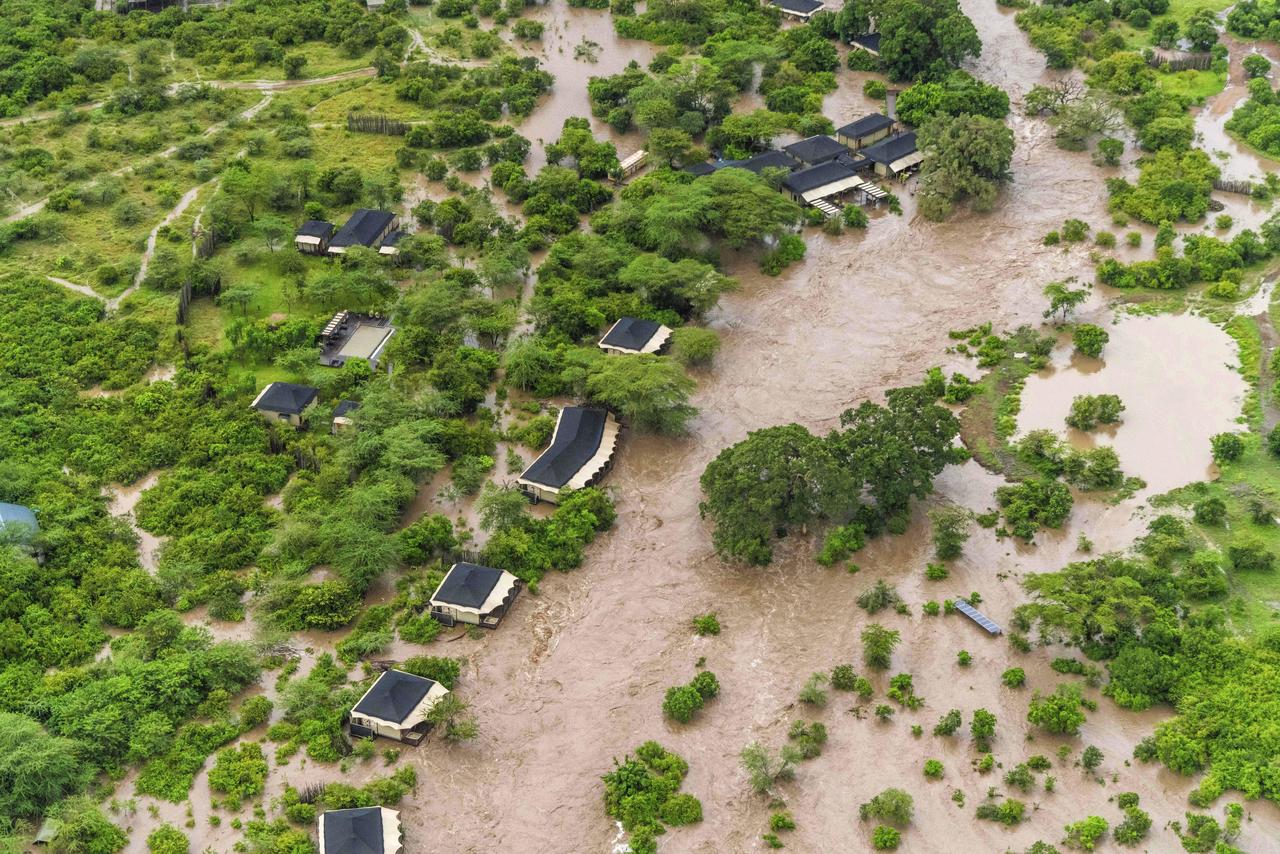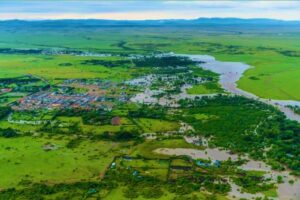News
Floods In Kenya: Dozens Of Tourists Evacuated From Maasai Mara Reserve

Nearly 100 tourists were among people marooned after a river overflowed in Kenya’s famed Maasai Mara wildlife reserve following a heavy downpour, a local administrator said Wednesday, as the death toll from flood-related disasters neared 180.
Torrential rains, amplified by the El Niño weather pattern, have lashed much of the East African country and destroyed roads, bridges and other infrastructure.
“Approximately 100 or more tourists” were stranded in more than a dozen lodges, hotels and camps, Narok West sub-county administrator Stephen Nakola told AFP.
“That is the preliminary number as of now because some of the camps are unaccessible,” he said.
The world-famous Maasai Mara, in southwestern Kenya, is a tourist magnet and home to native wildlifeincluding the so-called Big Five—lions, elephants, rhinos, leopards and buffalo—as well as giraffes, hippos and cheetahs.
The Kenya Red Cross said it had rescued more than 90 people from the camps, some of them by air.
“In some camps, tents have been swept away and the Mara bridge, linking the Mara Triangle and the Greater Mara, has been washed away,” it said on X, adding later that the floodwaters had “subsided”.
Tourism alongside agriculture and diaspora remittances are Kenya’s top foreign exchange earners.

Due to heavy rains causing floods, tourists were airlifted from Kenya’s Maasai Mara reserve, which resulted in the closure of over a dozen accommodations.
Revenue from tourism jumped nearly a third in 2023 over the previous year beating the pre-pandemic numbers, the government said in March.
Tourism minister Alfred Mutua had earlier on Wednesday said “several camps have been impacted” by the downpour and warned all hotels and camps near rivers within Kenyan parks and reserves to prepare “for potential evacuations.”
“Develop clear evacuation, transportation, and hospitality protocols,” Mutua said.
The directive came hours after President William Ruto deployed the military to evacuate everyone living in flood-prone areas.
People living in the affected areas will have 48 hours to move after those who remain “will be relocated forcibly in the interest of their safety,” the cabinet said.
‘Early warning systems’
So far, 179 people including 15 children have died in flood-related disasters across Kenya since March, according to government data.
Some 90 people have been reported missing, raising fears that the toll could go higher, and more than 195,000 others displaced.
In the worst single incident that killed nearly 50 villagers, a makeshift dam burst in the Rift Valley before dawn Monday, sending torrents of water and mud gushing down a hill and swallowing everything in its path.
The tragedy was the deadliest episode in the country since the start of the rainy season.
The disaster has sparked an outpouring of condolences and pledges of solidarity with the affected families from all over the world.
Pope Francis on Wednesday said he conveyed his “spiritual closeness” to Kenyans “at this time when a severe flood has tragically taken the lives of many of our brothers and sisters, injuring others and causing widespread destruction”.
“I invite you to pray for all those who are suffering the effects of this natural disaster,” he said at a general audience at the Vatican.
The weather has also left a trail of destruction in neighboring Tanzania, where at least 155 people have been killed in flooding and landslides.
El Niño is a naturally occurring climate pattern typically associated with increased heat worldwide, leading to drought in some parts of the world and heavy rains elsewhere.
Kenya Insights allows guest blogging, if you want to be published on Kenya’s most authoritative and accurate blog, have an expose, news TIPS, story angles, human interest stories, drop us an email on [email protected] or via Telegram
-

 Investigations2 weeks ago
Investigations2 weeks agoHow Land Grabbing Cartels Have Captured Ardhi House
-

 Business1 week ago
Business1 week agoPanic As Payless Africa Freezes With Billions of Customers Cash After Costly Jambopay Blunder
-

 News2 weeks ago
News2 weeks agoSCANDAL: Cocoa Luxury Resort Manager Returns to Post After Alleged Sh28 Million Bribe Clears Sexual Harassment and Racism Claims
-

 Africa2 weeks ago
Africa2 weeks agoPredators of South Sudan: Young “Guardians” Loot Billions
-

 Business2 weeks ago
Business2 weeks agoMwananchi Credit Faces Massive Lawsuits After Court Flags Predatory Lending That Left Customers’ Loans Ballooning
-

 Investigations7 days ago
Investigations7 days agoHow SportPesa Outfoxed Paul Ndung’u Of His Stakes With A Wrong Address Letter
-

 News1 week ago
News1 week agoRentokil Boss Fraser Branch in Highway Smash as DUI and Racism Claims Surface
-

 Investigations2 weeks ago
Investigations2 weeks agoHow Arrest of a Soldier’s Spouse Dragged KDF Into Alleged Theft of Meth Haul in Mombasa



















